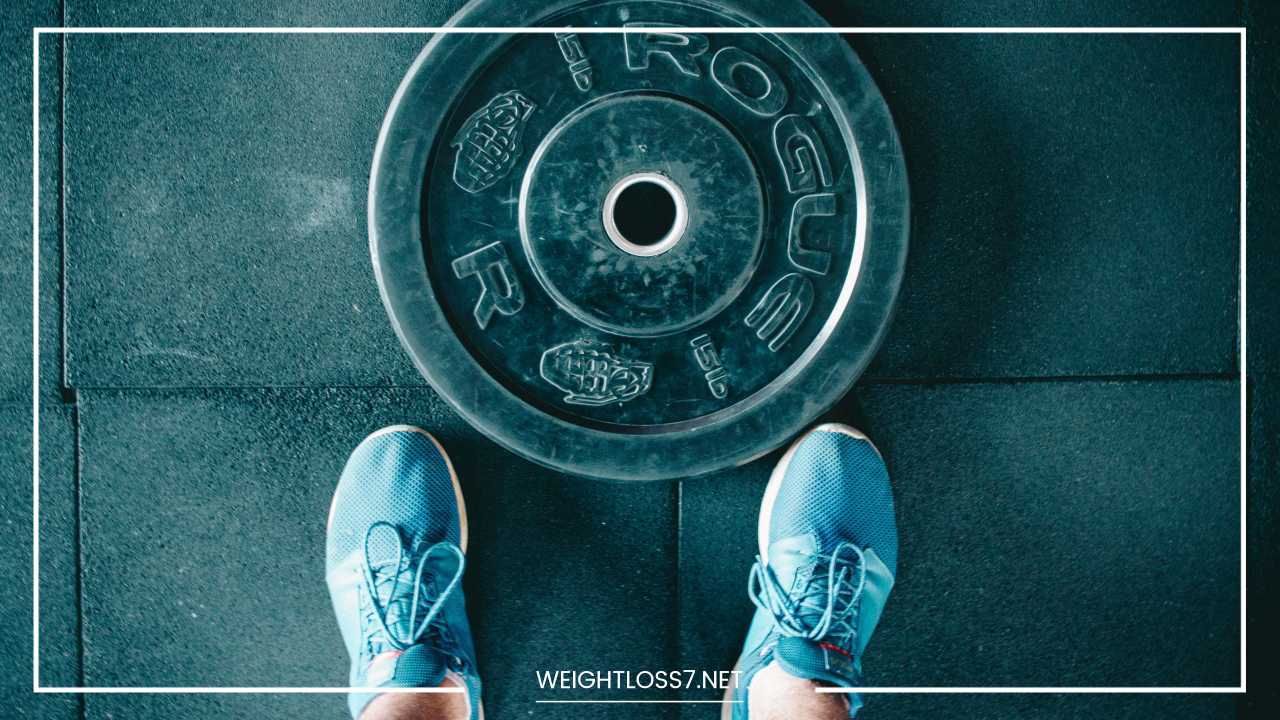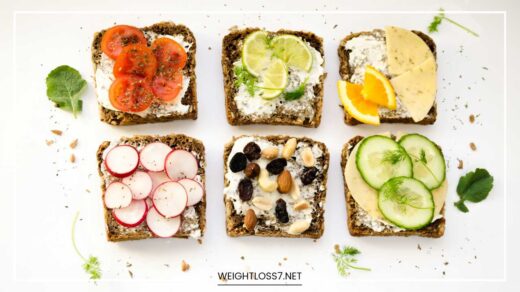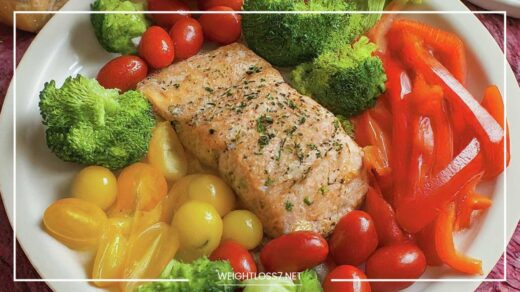How to Lose Belly Fat Naturally

Lose Belly Fat
Excess belly fat is a common concern for many individuals seeking to improve their overall health and appearance.
While spot reduction is not possible, there are effective strategies you can incorporate into your lifestyle to help lose belly fat naturally.
In this comprehensive guide, we will explore various methods, including dietary adjustments, exercise, and lifestyle changes, that can assist in achieving a trim waistline.
Understanding Belly Fat: Types and Health Risks
Belly fat can be categorized into two types: subcutaneous fat, which lies just beneath the skin, and visceral fat, which surrounds the organs in the abdominal cavity.
Subcutaneous fat is the visible fat that you can pinch with your fingers, while visceral fat is hidden and can accumulate around vital organs like the liver and intestines.
Visceral fat is particularly harmful and has been linked to various health risks, including heart disease, stroke, type 2 diabetes, insulin resistance, and certain cancers.
Understanding the risks associated with belly fat can serve as motivation to adopt a healthier lifestyle.
Balanced Diet: Focus on Whole Foods
A balanced diet forms the foundation for natural weight loss, including belly fat reduction. Rather than resorting to crash diets or extreme restrictions, focus on consuming whole, unprocessed foods that are rich in nutrients.
These foods provide essential vitamins, minerals, antioxidants, and fiber while keeping you satisfied and supporting your weight loss goals. Here are some key dietary adjustments to consider:
- Load Up on Fruits and Vegetables: These nutrient-dense foods are low in calories and high in fiber, making them ideal for weight loss. They also contain various phytonutrients that promote overall health.
- Embrace Whole Grains: Choose whole grains like brown rice, quinoa, oats, and whole wheat over refined grains. Whole grains provide more fiber and nutrients, which can aid in reducing belly fat.
- Opt for Lean Proteins: Protein is an important macronutrient that can aid in weight loss and help reduce belly fat. It increases feelings of fullness, boosts metabolism, and supports the maintenance and growth of lean muscle mass. Include lean sources of protein such as poultry, fish, tofu, legumes, and Greek yogurt in your meals to optimize your weight loss efforts.
- Choose Healthy Fats: Not all fats are created equal. Opt for healthy fats, particularly unsaturated fats, which can help reduce belly fat and improve overall health. Include foods like avocados, nuts, seeds, olive oil, and fatty fish in your diet. These fats provide essential nutrients and promote satiety, helping you feel fuller for longer.
- Limit Added Sugars and Refined Carbohydrates: Excessive consumption of added sugars and refined carbohydrates can contribute to belly fat accumulation. These foods are often high in calories and lack essential nutrients. Limit your intake of sugary beverages, sweets, processed snacks, and refined grains. Instead, opt for whole, unprocessed alternatives that provide more nutrients and promote weight loss.
Portion Control: Mindful Eating for Weight Loss
Practicing portion control is crucial when aiming to lose belly fat naturally. Be mindful of your portion sizes and avoid overeating.
Many people tend to eat more than they need due to large serving sizes and external cues, such as the size of the package or plate. Here are some tips to help you practice mindful eating:
- Use Smaller Plates: Choose smaller plates and bowls to help control portion sizes. This can trick your brain into thinking you’re eating more than you actually are.
- Eat Slowly and Chew Thoroughly: Eating slowly allows your brain to register when you’re full, preventing overeating. Chew your food thoroughly to aid digestion and promote better nutrient absorption.
- Listen to Your Body: Pay attention to your body’s hunger and fullness cues. Eat when you’re hungry and stop when you’re satisfied. Avoid eating out of boredom or stress.
Include Protein in Your Meals
Protein is an essential component of any weight loss plan. It not only supports muscle growth and repair but also plays a key role in reducing belly fat.
High-protein diets have been shown to increase feelings of fullness and boost metabolism, leading to reduced calorie intake and greater fat burning.
Including protein-rich foods in your meals can help you achieve your weight loss goals. Here are some excellent sources of protein:
- Poultry: Chicken and turkey are lean sources of protein and can be prepared in various delicious ways.
- Fish: Fatty fish like salmon, mackerel, and trout provide omega-3 fatty acids and high-quality protein.
- Tofu and Tempeh: These plant-based protein sources are suitable for vegetarians and vegans.
- Legumes: Beans, lentils, and chickpeas are not only rich in protein but also high in fiber, promoting satiety.
- Greek Yogurt: Greek yogurt is a protein-packed dairy option with the added benefit of probiotics for gut health.
Choose Healthy Fats: Opt for Unsaturated Sources
Healthy fats are an essential part of a balanced diet and can aid in belly fat reduction. Unlike saturated and trans fats, unsaturated fats, including monounsaturated and polyunsaturated fats, have been associated with various health benefits.
They can help improve cholesterol levels, reduce inflammation, and promote heart health. Here are some sources of healthy fats to include in your diet:
- Avocados: Avocados are rich in monounsaturated fats, which have been shown to reduce belly fat.
- Nuts and Seeds: Almonds, walnuts, chia seeds, and flaxseeds are excellent sources of healthy fats, fiber, and protein.
- Olive Oil: Extra virgin olive oil is a staple of the Mediterranean diet and provides monounsaturated fats and antioxidants.
- Fatty Fish: Salmon, sardines, and trout are rich in omega-3 fatty acids, which have been linked to reduced inflammation and improved heart health.
- Nut Butter: Natural nut butters without added sugars or hydrogenated oils can be a healthy addition to your diet in moderation.
Limit Added Sugars and Refined Carbohydrates
Excessive consumption of added sugars and refined carbohydrates can lead to weight gain and contribute to belly fat accumulation.
These simple carbohydrates cause rapid spikes in blood sugar levels, leading to increased insulin secretion and fat storage.
To reduce belly fat, it’s important to limit your intake of these empty-calorie foods. Here are some tips to help you cut back on added sugars and refined carbs:
- Read Labels: Check food labels for added sugars and hidden sources of refined carbohydrates. Ingredients like sucrose, high-fructose corn syrup, and white flour are indicators of added sugars and refined grains.
- Choose Whole Foods: Opt for whole, unprocessed foods that contain natural sugars and complex carbohydrates. These foods provide more nutrients and are less likely to cause blood sugar spikes.
- Reduce Sweetened Beverages: Sugary sodas, fruit juices, and energy drinks are significant sources of added sugars. Replace these beverages with water or unsweetened herbal tea.
- Limit Processed Snacks: Processed snacks like cookies, cakes, and chips are often high in added sugars and refined grains. Choose healthier snack options like whole fruit, nuts, or whole-grain crackers with hummus.
Stay Hydrated: Drink Sufficient Water
Staying hydrated is essential for overall health and can aid in weight loss, including reducing belly fat. Water is calorie-free and helps regulate various bodily functions, including metabolism and digestion. Drinking sufficient water throughout the day can:
- Boost Metabolism: Drinking water has been shown to temporarily increase resting energy expenditure, helping you burn more calories.
- Reduce Appetite: Sometimes, the body may confuse thirst with hunger. Staying hydrated can prevent overeating and unnecessary snacking.
- Aid in Digestion: Water helps soften stool and supports proper bowel movements, promoting healthy digestion.
- Replace Sugary Beverages: By choosing water over sugary beverages, you can significantly reduce your calorie intake and improve your overall health.
The amount of water you need can vary based on factors such as age, activity level, and climate.
As a general guideline, aim to drink at least eight 8-ounce glasses of water per day. However, individual needs may differ, so listen to your body and adjust your water intake accordingly.
Regular Exercise: Incorporating Cardiovascular Activities
Regular exercise plays a significant role in losing belly fat naturally. Engage in cardiovascular activities that get your heart rate up and increase calorie burn.
Cardiovascular exercises are effective for overall fat loss, including reducing belly fat. Here are some popular cardiovascular activities you can incorporate into your routine:
- Brisk Walking: Walking is a low-impact exercise that can be easily incorporated into your daily routine. Aim for at least 30 minutes of brisk walking most days of the week.
- Jogging or Running: If you enjoy running, incorporate jogging or running sessions into your weekly exercise routine.
- Cycling: Whether indoors on a stationary bike or outdoors on a regular bike, cycling is a great way to burn calories and strengthen your legs.
- Swimming: Swimming is a full-body workout that is easy on the joints and can help you burn calories effectively.
- Dancing: Dancing is a fun and enjoyable way to get moving while burning calories. Take a dance class or simply dance to your favorite tunes at home.
Strength Training: Build Lean Muscle Mass
Incorporating strength training into your exercise routine is essential for losing belly fat. Strength training exercises, such as weightlifting or bodyweight exercises, help build lean muscle mass.
Muscle tissue burns more calories at rest than fat tissue, thereby increasing your metabolism and aiding in belly fat reduction. Here are some tips for incorporating strength training into your workouts:
- Start with Bodyweight Exercises: If you’re new to strength training, begin with bodyweight exercises like squats, lunges, push-ups, and planks. These exercises use your body weight as resistance and are effective for building strength.
- Use Free Weights or Resistance Bands: As you progress, consider incorporating free weights or resistance bands to increase the intensity of your strength training workouts.
- Target All Major Muscle Groups: Work on different muscle groups, including the chest, back, legs, shoulders, and core, to achieve a balanced and effective strength training routine.
- Gradually Increase Intensity: As your strength improves, gradually increase the weight or resistance to continue challenging your muscles.
High-Intensity Interval Training (HIIT): Effective Fat Burning Workouts
High-Intensity Interval Training (HIIT) is a time-efficient and effective method for burning calories and reducing belly fat.
These workouts involve alternating between intense bursts of exercise and short recovery periods. HIIT workouts can be done with various exercises, such as sprinting, jumping jacks, burpees, or mountain climbers.
The high-intensity intervals elevate your heart rate, while the brief recovery periods allow you to catch your breath.
This cycle of intensity helps you burn more calories in a shorter amount of time compared to traditional steady-state cardio workouts. Here’s how to create a basic HIIT workout:
- Warm-Up: Begin with a 5-10 minute warm-up to get your muscles and cardiovascular system ready for the workout. You can do light cardio exercises like jogging in place, jumping jacks, or dynamic stretches.
- Work Phase: Perform an intense exercise for 20-30 seconds. This could be a sprint, jumping jacks, or any other exercise that elevates your heart rate.
- Rest Phase: Follow the intense exercise with a 10-20 second rest period. During this time, allow your heart rate to lower before the next intense exercise.
- Repeat: Repeat the work and rest phases for 10-20 minutes, depending on your fitness level and the intensity of the exercises.
- Cool Down: End the workout with a 5-10 minute cool-down, which may include static stretches to improve flexibility and reduce muscle soreness.
Manage Stress Levels: Practice Stress-Reducing Techniques
Chronic stress can contribute to weight gain, including belly fat accumulation. When you experience stress, your body releases cortisol, a hormone that triggers the “fight or flight” response.
Over time, elevated cortisol levels can lead to increased appetite, cravings for high-calorie foods, and fat storage, particularly around the belly area.
Managing stress is essential for overall well-being and can support your weight loss journey. Here are some stress-reducing techniques you can practice:
- Meditation: Meditation involves focusing your mind on the present moment, promoting relaxation and stress reduction.
- Deep Breathing Exercises: Practicing deep breathing techniques can help calm your nervous system and reduce stress.
- Yoga: Yoga combines physical postures, breathing exercises, and meditation to promote relaxation and mental clarity.
- Engage in Hobbies: Pursue activities that bring joy and relaxation, such as reading, painting, gardening, or spending time in nature.
- Prioritize Self-Care: Make time for yourself and engage in activities that help you unwind and de-stress.
Get Quality Sleep: Promote Healthy Hormone Balance
Adequate sleep is crucial for overall health and plays a role in weight management. Sleep is when your body performs essential functions, including hormone regulation and tissue repair.
Lack of sleep disrupts hormone levels, including those related to appetite regulation. Ghrelin, the hormone responsible for hunger, increases, while leptin, the hormone responsible for satiety, decreases when you’re sleep-deprived.
As a result, you may feel hungrier and have difficulty controlling your food intake. Aim for 7-8 hours of quality sleep each night to promote healthy hormone balance and support your weight loss efforts.
Here are some tips to improve your sleep quality:
- Stick to a Sleep Schedule: Try to go to bed and wake up at the same time every day, even on weekends.
- Create a Relaxing Bedtime Routine: Establish a calming routine before bedtime to signal your body that it’s time to wind down. This may include reading, taking a warm bath, or practicing relaxation exercises.
- Create a Sleep-Friendly Environment: Ensure your bedroom is cool, dark, and quiet to promote better sleep.
- Limit Screen Time: Avoid electronic devices like smartphones and laptops before bedtime, as the blue light can interfere with your body’s natural sleep-wake cycle.
- Avoid Stimulants: Limit caffeine and avoid heavy meals close to bedtime to avoid disruptions to your sleep.
Avoid Late-Night Snacking: Give Your Body Time to Digest
Late-night snacking can hinder weight loss progress, especially in the abdominal area. When you eat right before bed, your body may not have enough time to digest the food properly, leading to digestive discomfort and potential weight gain.
Additionally, late-night snacks are often high in calories and unhealthy fats, which can contribute to belly fat accumulation.
To promote better digestion and support your weight loss goals, it’s best to give your body at least 2-3 hours between your last meal and bedtime. If you feel hungry, opt for a light, healthy snack such as a piece of fruit or a handful of nuts.
Be Consistent: Maintain a Healthy Lifestyle
Consistency is key when aiming for natural belly fat loss. Maintaining a healthy lifestyle is not about quick fixes or short-term diets.
Instead, it’s about adopting sustainable habits that become a part of your daily routine. Here are some tips for maintaining a healthy lifestyle:
- Set Realistic Goals: Set achievable and realistic goals for your weight loss journey. Focus on small, incremental changes rather than drastic measures.
- Stay Active: Incorporate physical activity into your daily routine, whether it’s going for a walk, taking the stairs, or participating in exercise classes.
- Plan Your Meals: Plan your meals ahead of time to avoid impulsive and unhealthy food choices. Prep healthy snacks and meals to have on hand when hunger strikes.
- Stay Hydrated: Make a habit of drinking water throughout the day to stay hydrated and support your weight loss efforts.
- Monitor Your Progress: Keep track of your dietary changes, exercise routines, and measurements to assess your progress and make necessary adjustments.
Monitor Progress: Track Your Results
Monitoring your progress throughout your weight loss journey is essential to stay motivated and make informed adjustments to your approach.
Keeping a record of your dietary changes, exercise routines, and measurements can provide valuable insights into your progress. Here are some ways to track your results:
- Food Journal: Keep a food journal to record what you eat and drink each day. This can help you identify patterns and make healthier choices.
- Exercise Log: Keep a log of your workouts, including the type of exercise, duration, and intensity. Tracking your physical activity can help you stay on target and challenge yourself as you progress.
- Measurements: Take regular measurements of your waist, hips, and other target areas. This can help you track changes in your body composition over time.
- Progress Photos: Take photos of yourself at regular intervals to visually track your transformation. Sometimes, changes in body composition are more apparent in photos than on the scale.
- Assess Your Feelings: Pay attention to how you feel throughout your journey. Increased energy, improved mood, and better sleep are all positive indicators of a healthy lifestyle.
Final Thoughts
Losing belly fat naturally requires a comprehensive and holistic approach that combines a balanced diet, regular exercise, and lifestyle modifications.
By adopting healthy eating habits, incorporating exercise into your routine, managing stress levels, getting sufficient sleep, and being consistent in your efforts, you can achieve a trim waistline and improve your overall well-being.
Remember that everyone’s journey is unique, and it’s essential to listen to your body and make adjustments that suit your individual needs and preferences.
With patience, determination, and the right strategies, you can achieve your weight loss goals and maintain a healthier lifestyle for the long term.
FAQs (Frequently Asked Questions)
Can I target belly fat specifically?
Spot reduction is not possible. However, by adopting a healthy lifestyle that includes a balanced diet and regular exercise, you can reduce overall body fat, including belly fat.
How long does it take to see results?
The rate of belly fat loss varies for each individual and depends on factors such as diet, exercise routine, and metabolism. Be patient and stay consistent with your efforts for sustainable results.
Are there any specific foods that burn belly fat?
No single food can burn belly fat. A balanced diet that includes whole, nutrient-dense foods and proper portion control is essential for natural weight loss.
Can stress cause belly fat?
Chronic stress can contribute to belly fat accumulation due to increased cortisol levels. Managing stress through relaxation techniques is beneficial for weight loss.
Should I avoid all carbohydrates to lose belly fat?
Carbohydrates are an essential part of a balanced diet. Focus on consuming whole grains, fruits, and vegetables while limiting refined carbohydrates and added sugars for effective weight loss.

















